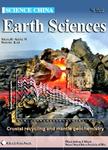Modeling gross primary production of a temperate grassland ecosystem in Inner Mongolia, China, using MODIS imagery and climate data
Modeling gross primary production of a temperate grassland ecosystem in Inner Mongolia, China, using MODIS imagery and climate data作者机构:Qianyanzhou Ecological Experimental StationInstitute of Geographic Sciences and Natural Resources ResearchChinese Academy of SciencesBeijing 100101China Graduate University of Chinese Academy of SciencesBeijing 100049China Institute for the Study of EarthOceans and SpaceUniversity of New HampshireDurhamNH 03824USA Key Laboratory of Ecosystem Network Observation and ModelingInstitute of Geographic Sciences and Natural Resources Re-searchChinese Academy of SciencesBeijing 100101China Laboratory of Quantitative Vegetation EcologyInstitute of BotanyChinese Academy of SciencesBeijing 100093China
出 版 物:《Science China Earth Sciences》 (中国科学(地球科学英文版))
年 卷 期:2008年第51卷第10期
页 面:1501-1512页
核心收录:
学科分类:090503[农学-草业科学] 0909[农学-草学] 0905[农学-畜牧学] 0708[理学-地球物理学] 09[农学] 0903[农学-农业资源与环境] 0704[理学-天文学]
基 金:the International Partnership Project of Chinese Academy of Sciences (Grant No. CXTD-Z2005-1) National Basic Research Program of China (Grant No. 2002CB412501) NASA Land Cover and Land Use Change (LCLUC) Program (Grant Nos. NAG5-11160, NNG05GH80G)
主 题:GPP eddy covariance remote sensing Xilin Gol
摘 要:Carbon fluxes in temperate grassland ecosystems are characterized by large inter-annual variations due to fluctuations in precipitation and land water availability. Since an eddy flux tower has been in operation in the Xilin Gol grassland, which belongs to typical temperate grassland in North China, in this study, observed eddy covariance flux data were used to critically evaluate the biophysical performance of different remote sensing vegetation indices in relation to carbon fluxes. Furthermore, vegetation photosynthesis model (VPM) was introduced to estimate gross primary production (GPP) of the grassland ecosystem for assessing its dependability. As defined by the input variables of VPM, Moderate Resolution Imaging Spectroradimeter (MODIS) and standard data product MOD09A1 were downloaded for calculating enhanced vegetation index (EVI) and land surface water index (LSWI). Measured air temperature (Ta) and photosynthetically active radiation (PAR) data were also included for model simulating. Field CO2 flux data, during the period from May, 2003 to September, 2005, were used to estimate the “observed GPP (GPP obs) for validation. The seasonal dynamics of GPP predicted from VPM (GPP VPM) was compared quite well (R 2=0.903, N=111, p0.0001) with the observed GPP. The aggregate GPP VPM for the study period was 641.5 g C·m?2, representing a ~6% over-estimation, compared with GPP obs. Additionally, GPP predicted from other two typical production efficiency model (PEM) represents either higher overestimation or lower underestimation to GPP obs. Results of this study demonstrate that VPM has potential for estimating site-level or regional grassland GPP, and might be an effective tool for scaling-up carbon fluxes.



